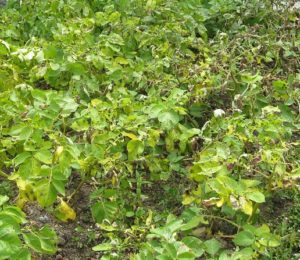Potato Diseases
Potato Late Blight
Late blight in potatoes is the key foliar disease to affect potato crops in Scotland. Potato blight is caused by a fungus (Phytophthora infestans). The main source of the disease are potato dumps (areas where diseased potatoes from previous years have been left). These dumps tend to have a high concentration of diseased tubers and growth develops early in the season, resulting in a localised source of inoculum at the time when field crops are emerging. Other sources included infected seed and potato volunteers. To date, soil borne infection is not known to occur in the UK.
Weather conditions which suit potato blight are mild and humid. High-risk periods can be forecast based on minimum temperatures & humidity. Varieties vary in their resistance to blight on the haulm and the tuber. No current variety is totally resistant.

Late blight is caused by the fungus Phytophtora infestans and it first became a major problem in Europe in the 18th Century, where it led to extensive destruction of potato crops in Ireland.
Although seed and potato volunteers are potential sources of the disease, the key source is potato dumps. A potato dump is a pile of potato tubers which have been discarded in previous years. These dumps are a concentration of diseased tubers which, if ignored, sprout early in the year and allow the disease to develop.
Typical disease symptoms comprise pale brown or black water-soaked spots on leaves. The white fungal growth of the fungus is generally seen in the zone between the lesion and healthy plant tissue. This is because late blight is a biotroph and lives on healthy green tissue. Lesions can also develop on the stems and appear as pale brown watersoaked marks. The spores which develop from the fungus from these lesions are dispersed in the wind. These spores may infect more potato plants directly, or produce swimming spores known as zoospores which infect more plants. Heavy rain can wash these spores from the leaves and stems onto the ground where they can infect the tubers. Symptoms on the tubers comprise brown mottled lesions can be seen inside the tubers close to the surface. In severe cases, the marks can be seen without cutting open tubers.
Sign up for potato blight updates from BlightWatch for daily blight updates in your area.
Sign up to the FAS newsletter
Receive updates on news, events and publications from Scotland’s Farm Advisory Service
